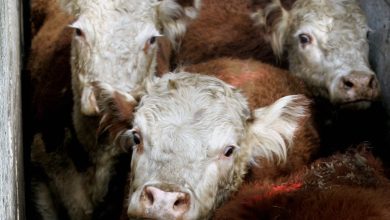Raising Beef Cattle A Comprehensive Guide to Success
Raising beef cattle is a rewarding and profitable venture that has attracted many farmers and enthusiasts alike. Whether you’re a seasoned farmer looking to diversify your operations or an aspiring livestock owner interested in getting started, this comprehensive guide will provide you with all the information you need to successfully raise beef cattle. From understanding the basics of cattle breeds to implementing effective management practices, we’ll explore the who, what, when, how to, pros and cons, alternatives, step-by-step instructions, comparisons, tips, and the best practices for raising beef cattle.
Table of Contents
- Introduction
- Understanding Beef Cattle Breeds
- Selecting the Right Cattle for Your Farm
- Establishing Proper Shelter and Pasture
- Nutrition and Feeding Requirements
- Health Care and Disease Prevention
- Reproduction and Breeding Strategies
- Managing the Growth and Development of Cattle
- Marketing and Selling Your Beef Cattle
- Pros and Cons of Raising Beef Cattle
- Alternatives to Raising Beef Cattle
- Step-by-Step Guide to Raising Beef Cattle
- Comparing Different Cattle Management Systems
- Essential Tips for Successful Cattle Raising
- The Best Practices in Beef Cattle Production
1. Introduction
Raising beef cattle has been a longstanding tradition in agriculture, providing meat for human consumption and contributing to local economies worldwide. It involves the careful management of cattle from birth to market, ensuring their health, growth, and overall well-being. In recent years, the demand for high-quality, locally sourced beef products has increased, making beef cattle farming a potentially lucrative endeavor.
However, venturing into beef cattle production requires dedication, knowledge, and proper planning. Understanding the intricacies of different cattle breeds, implementing effective management practices, and optimizing the production process are essential elements for success. In this guide, we will delve into each aspect of raising beef cattle, providing detailed insights and practical advice to help you achieve your goals.
2. Understanding Beef Cattle Breeds
Beef cattle come in various breeds, each with distinct characteristics that influence their suitability for different production systems and end products. Familiarizing yourself with the different breeds is crucial for selecting the right cattle for your farm. Here are a few examples of popular beef cattle breeds:
- Angus: Renowned for their marbling and tenderness, Angus cattle are highly valued in the beef industry. They adapt well to different climates and have excellent mothering abilities.
- Hereford: Hereford cattle are known for their hardiness and docile temperament. They excel in pasture-based systems and produce high-quality beef with exceptional flavor.
- Charolais: Originating from France, Charolais cattle are recognized for their rapid growth and muscular build. They are commonly used as terminal sires in crossbreeding programs.
- Limousin: Limousin cattle are efficient converters of feed, yielding lean and tender meat. They possess a calm disposition and adapt well to a variety of environments.
Understanding the characteristics and traits of different beef cattle breeds allows you to make informed decisions when selecting animals for your operation.
3. Selecting the Right Cattle for Your Farm
Selecting the right cattle for your farm is a critical step towards building a successful beef cattle enterprise. When choosing animals, consider factors such as breed suitability, health history, conformation, and intended market. Additionally, assess the animals’ physical attributes, including body size, muscling, and overall appearance. Conducting thorough research and seeking advice from experienced breeders can help you make informed decisions and acquire cattle that align with your goals.
For instance, if you aim to produce high-quality beef for the gourmet market, selecting Angus cattle known for their marbling and tenderness would be a wise choice. On the other hand, if you plan to focus on grass-fed, pasture-based production, Hereford cattle may be more suitable due to their adaptability and grazing efficiency.
Remember that selecting healthy animals is crucial in preventing disease outbreaks and ensuring the overall well-being of your herd. Engage with reputable breeders or consult with a veterinarian to assess the health status of the cattle before making a final purchase decision.
To be continued…
Conclusion
Raising beef cattle can be a fulfilling and profitable endeavor if approached with the right knowledge and dedication. By understanding the intricacies of different cattle breeds, implementing effective management practices, and focusing on the well-being and growth of your animals, you can establish a successful beef cattle operation. From breed selection to marketing strategies, this guide has provided comprehensive insights into the world of raising beef cattle. Remember, continuous learning, adaptation to industry trends, and sound decision-making will play a vital role in your long-term success as a beef cattle producer.
FAQs (Frequently Asked Questions)
1.



